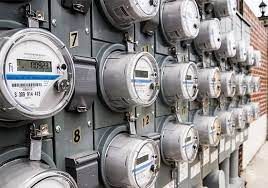Ecosave listed and growing on the strength of retrofit market
By Tina Perinotto (18 Nov, 2013)
Energy and water efficiency services company Ecosave listed on the Australian Stock Exchange in January this year at $1. The price today is hovering around $1.60.
According to chief operating officer Robin Archibald that’s on the strength of some solid business growth, the appointment of 10 staff this year, and with more to come. The company has also picked up an acquisition in Philadelphia, another energy services company DVLA that’s taken total staff numbers to about 70, split roughly evenly between the two countries and a small office in New Zealand.
Not bad for a company in an industry that’s been mired in the business of convincing property owners and managers to save money.
“Mired?” For several years it’s felt like that: the business case for energy savings and cost savings is clear – not to mention the carbon emissions that we need to shed quickly and prolifically – and yet it’s been hard for this industry to gain traction with chief executives and chief financial officers too busy worrying about core business to embark on programs they may not fully understand.
But, according to Archibald, with energy costs rising steeply and the effects of the GFC still visible, the outlook for this industry is improving.
“Overall there’s steadily increasing interest and opportunities in energy projects,” Archibald said in a phone conversation on Wednesday.
“There are different drivers. When things are a bit tight and when electricity prices are going up it’s a good way to reduce costs and when things are going well it’s a good way to reduce environmental impact.”
Among some of the clients that absolutely get it is the huge aged care facility provider Bupa. It’s engaged Ecosave in three tranches of energy makeovers for about 10 of its facilities with about 50 properties and another 15 to come.
Even with rising energy prices, though, aged care facilities are probably the last places in which people want to turn down the heat.
In just three sites, with 263 beds, Bupa was subjected to an increase of $3826 on its gas consumption between July and September, Archibald said.
One solution was to optimise the gas boiler system, which offered savings of $12,875 a year on gas consumption. Other solutions included replacements and refurbishments of lighting and controls and optimisation of HVAC (heating, ventilation and airconditioning).
That added up to a saving of $83,530 a year plus a “measurement and verification process” that would guarantee the savings, Achibald said.
Other clients around Australia include the Victorian Government and hopefully soon the NSW Government thanks to a selection process that’s put the team on the approved panel list for these state governments keen to add to their own bottom line through energy retrofits of their portfolios.
In Victoria the company is now undertaking detailed feasibility studies as part of an energy performance contract with the Department of Justice, Gippsland Water, Parks Victoria and the Metropolitan Fire Brigade.
“It’s a quite elongated process but we hope to have some contracts signed before Christmas.”
See our articles on this topic:
- Victorian government in radical retrofit program
- NSW Health audit report: too much energy waste; try harder
- NSW joins the rush to save money
Archibald is confident the energy retrofit scene is set for continued growth, driven in large part by rising energy prices.
“Some business owners breathed a sigh of relief when the 1 July 2013 NSW energy increases were announced,” he said recently in a media statement.
“After last year’s staggering 16 per cent average rise, this year’s increase was a mere 1.7 per per cent on average for electricity. Gas customers were not so lucky however, with the average rise being 8.5 per cent.”
However, a study by UTS in 2011 predicted that by 2020, gas prices could rise by another 25 per cent to 50 per cent from 2013 figures, which is line with the IPART determination for regulated tariffs.
Archibald points out there are huge savings to be made, as proved for instance by the commercial buildings in City of Sydney’s Better Buildings Partnership program, which claimed savings of $25 million per year on their power bills, or for businesses in the City of Yarra in Melbourne with its YES scheme (Yarra Environment Strategy). The 1200 Buildings Program by the City of Melbourne is also another big motivator.
But he says there are even more on offer.
“Australia’s industrial sector is currently leaving $2 billion a year on the table in energy efficiency savings,” he says.
The company was founded in 2002 by chief executive Marcelo Rouco, still a majority shareholder, who was previously a business turnaround specialist working for a corporate training multinational.
Archibald joined about 2012 after a role as national operations manager at UGL Services Beyond Green (now DTZ).
The company recently added a utilities service to the business, which collects and manages energy data.
“The growth strategy has been both organic and through acquisitions; we’ve added about 10 in the last year, principally in engineering,” he says.
“We’re still hiring, but probably not before Christmas.”
Another expansion has been in New Zealand where some government grants – not generous but extremely helpful, Archibald says – have encouraged Ecosave to set up a small office.
An interesting evolution in the retrofit market is the range of financial options now available to clients, Archibald says.
Ecosave offers a range of financed guaranteed energy saving options, which means the retrofit is essentially offered free of cost to the client.
“The clients don’t need to put in the capital expenditure up front; we fund the project on their behalf.”
Among the funding options are Environmental Upgrade Agreements, but take up of these is slow.
“We have EUAs in our offerings; they’re in our kit bag if you like, but we have a number of different models for our clients and we work out what suits them best.”
The challenges with EUAs come down to complexity, he says.
“You need to understand leasing. Every lease is different, so you have to consider the current leasing arrangement and how the model fits with that.
“At the end of the day, as a landlord, you can’t just implement an EUA; you still need to talk to the tenant.”
This article first appeared on the Fifth Estate on 18 November 2013.





